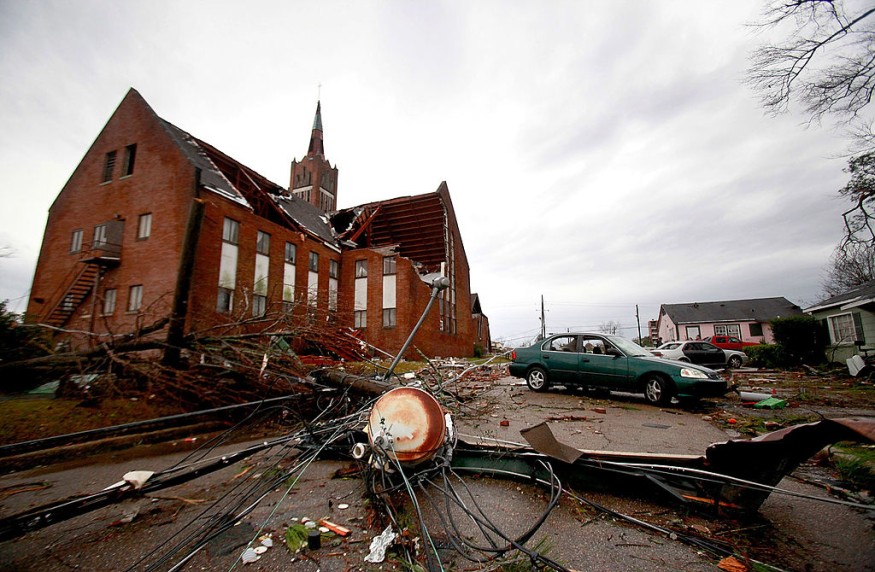A Mississippi tornado killed multiple people and prompted local authorities to declare a state of emergency in response to the natural disaster.
The deadly tornado slammed fragile structures and left dozens of people injured on Friday, March 24. In addition, another tornado killed at least one person in Alabama as a severe thunderstorm wreaked havoc across the southern US.
The tornadic storms came amid severe weather across the US region. Previous US weather forecasts last week warn of the storm's potential to bring flooding rain, damaging winds, large hail, and isolated tornadoes.
The country entered its official meteorological spring season on March 20 and since then experienced a combination of storms in the western, central, and southern parts of the nation.
Mississippi Tornado

A total of at least 25 people were killed during the tornado in Mississippi last Friday and other areas across the state. It was evening hours and people reportedly asleep in their beds when the twister struck the Delta town of Rolling Fork with an approximate population of 2,000 people.
President Joe Biden on Sunday, March 26, declared that Mississippi is in a major disaster and ordered federal aid to support recovery efforts, according to a statement by the White House, as cited by NBC News.
Following the twister onslaught, more forecasts of potential large hails have been reported for some parts of Alabama and Georgia by Sunday afternoon. Related weather events are possible in the coming week starting Monday, March 27. With this, cleanup efforts of downed trees, broken windows, and other debris from the twister.
Mississippi State of Emergency
Mississippi State Governor Tate Reeves also declared a state of emergency as a response to the damage caused by the whirling vortex of air. On the other hand, the mayor of Rolling Fork, Sharkey County, Eldridge Walker told CNN that the town has been "essentially wiped out," the BBC reported.
Meanwhile, governor Reeves also visited the town of Silver City and city of Winona to meet with residents affected by the disruptive tornado.
The state of emergency will allow local authorities to tap into federal funds, with the primary objective of rebuilding damaged infrastructure and providing affected residents with necessities, including facilities for displaced ones.
Enhanced Fujita Scale
Latest updates reveal that the devastation in Rolling Fork was caused by EF-4 or EF4 tornadoes, as rated by the National Weather Service (NWS) forecast office in Jackson, Mississippi, as reported by The Washington Post on Sunday evening.
The designation of the Mississippi tornado strength is based under the Enhanced Fujita scale, also called as the EF scale, which determines the intensity of tornadoes, with EF0 being the weakest and EF5 being the strongest.
US weather authorities assert that the emergence of tornadoes is common during a severe thunderstorm. In 2022, data from the Storm Prediction Center (SPC) of the National Oceanic and Atmospheric Administration (NOAA) showed there were 1,329 initial tornado reports during the year.
© 2025 NatureWorldNews.com All rights reserved. Do not reproduce without permission.





